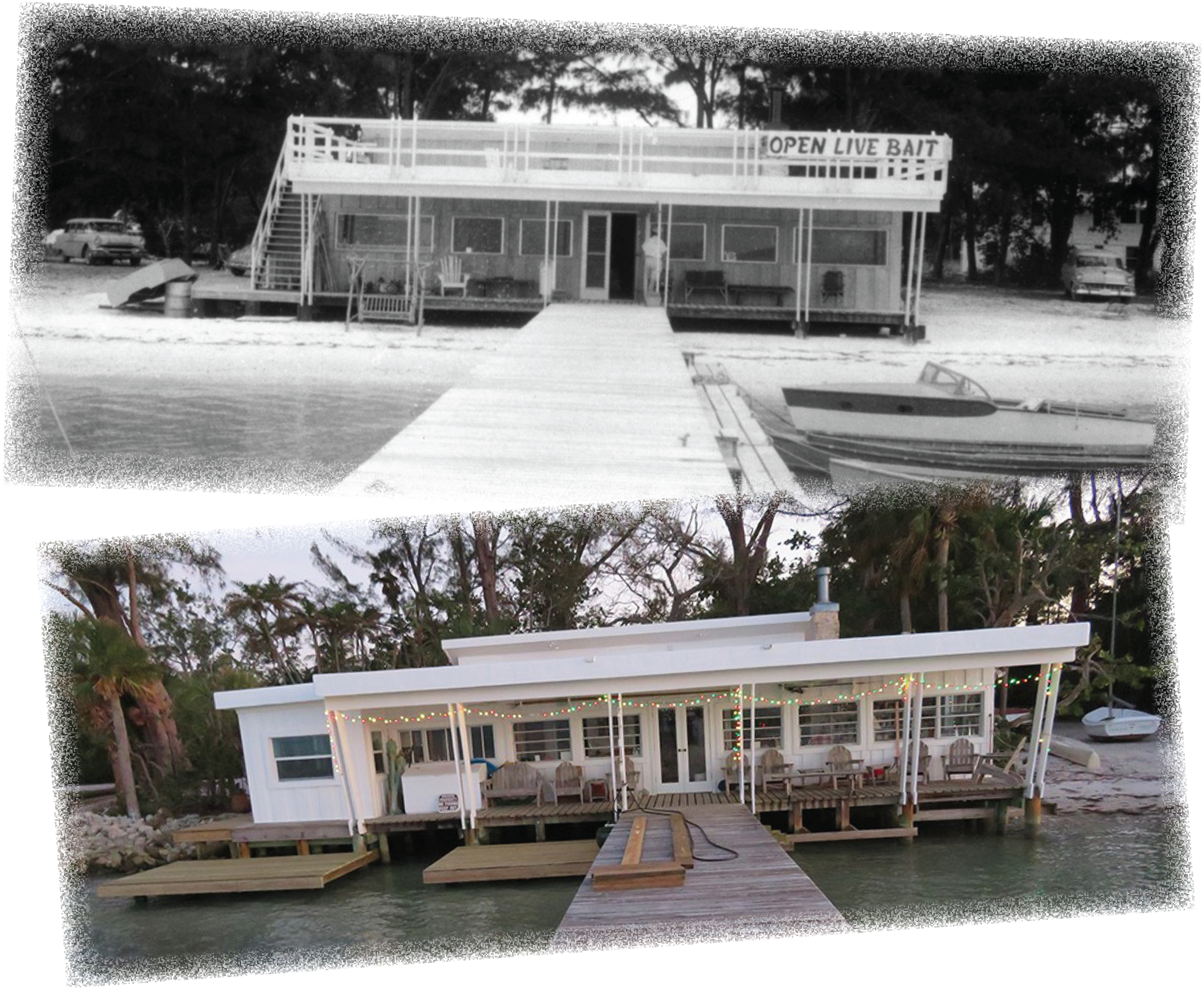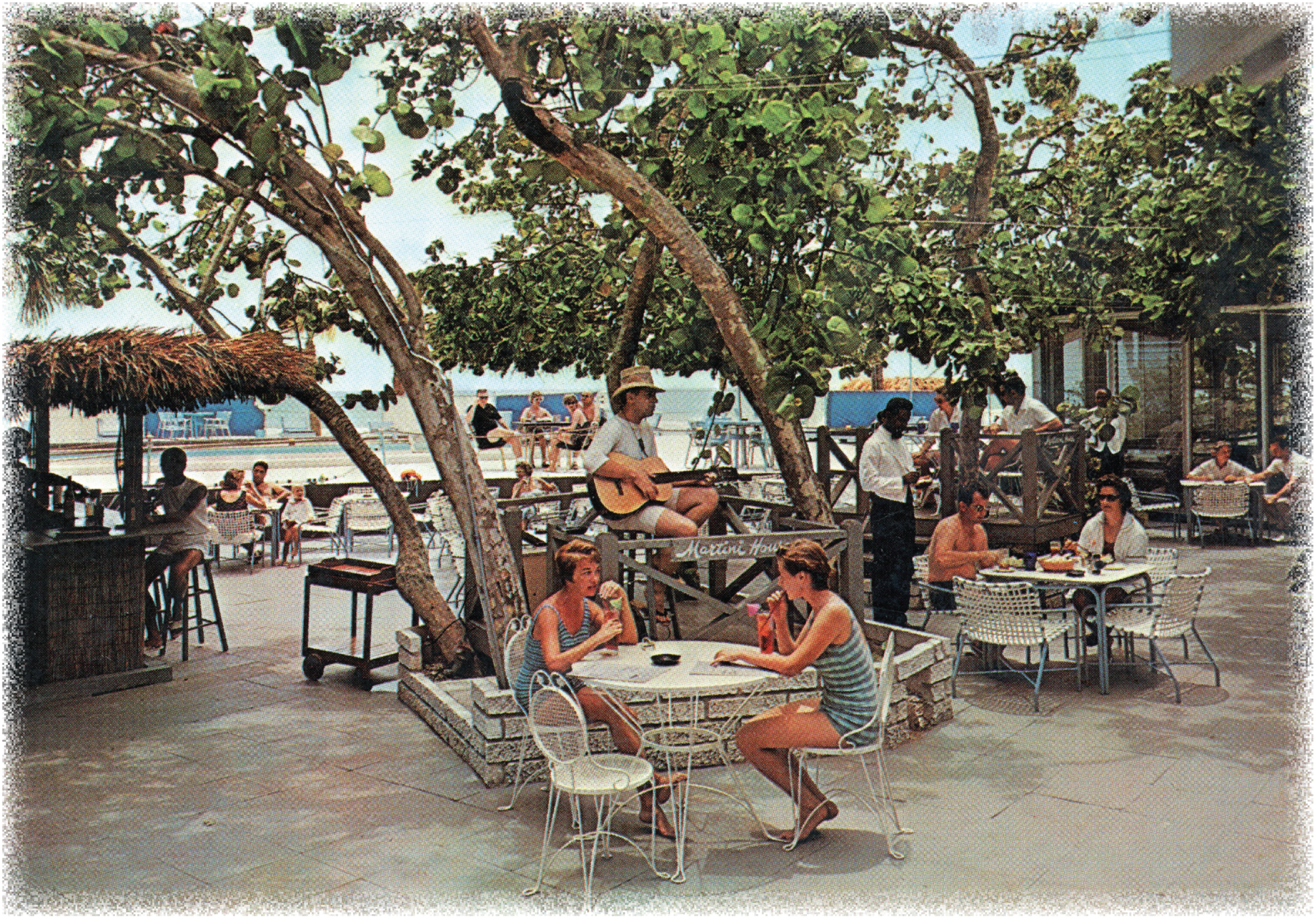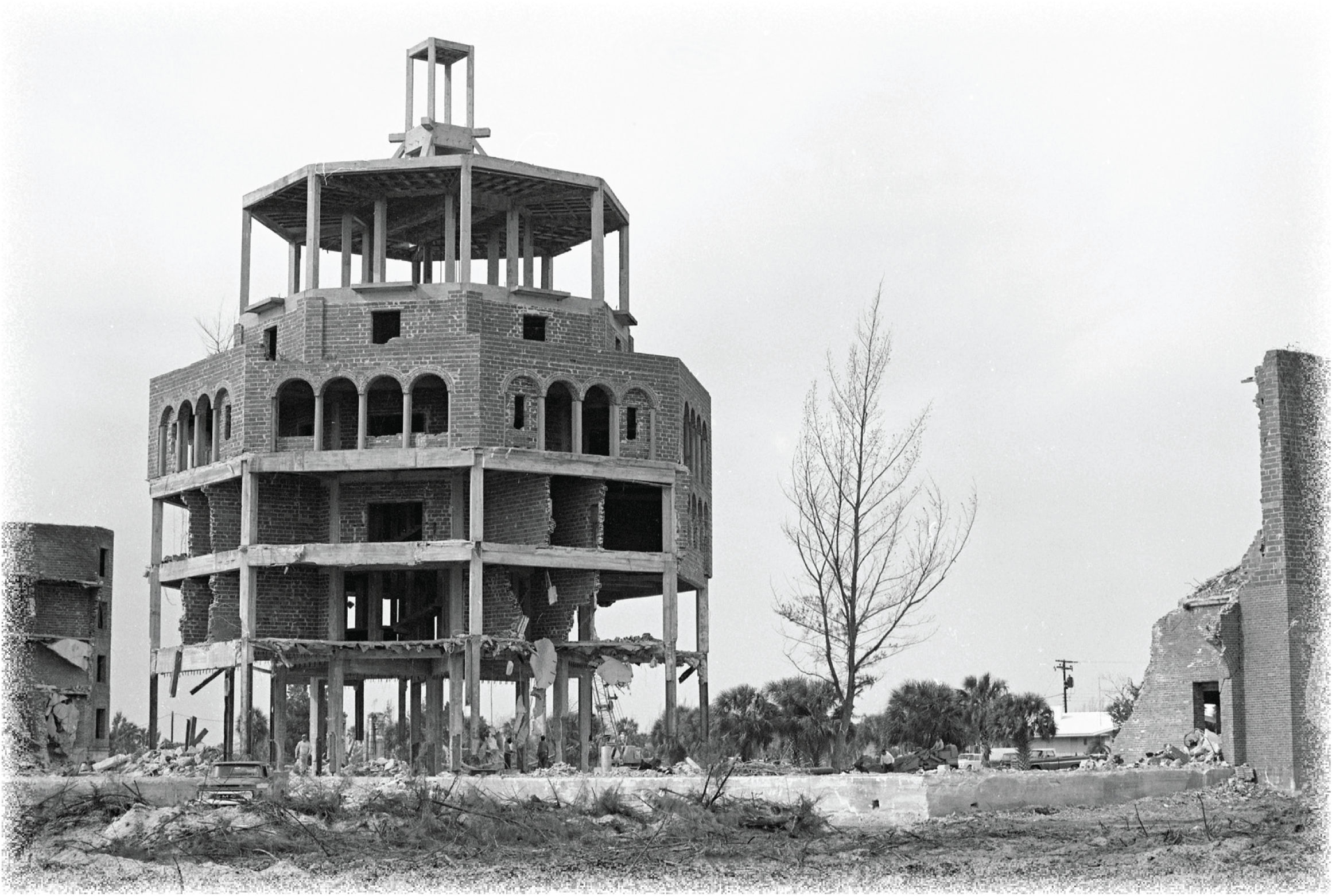- May 7, 2025
-
-
Loading
 Image courtesy of Katie Moulton
Image courtesy of Katie Moulton
T his narrow barrier island stretches 10.8 miles from tip to tip, with its widest point just a mile across, split by a county line. Longboat Key is home to beachfront mansions and condos worth well into eight figures. It’s also home to a mobile home park and an Ace Hardware. At the northern tip, historic Longbeach Village exudes Old Florida charm and a laid-back island vibe. Heading south into Sarasota County, development attempts to coexist with nature. Two championship golf courses, upscale condo communities and luxury resorts such as The Resort at Longboat Key Club and the new St. Regis Longboat Key dominate the landscape. Pockets of natural beauty remain, including the 34-acre Quick Point Nature Preserve and the tranquil Joan M. Durante Park, which preserve vital wetlands, mangroves and coastal hammock forests.
“Longboat Key offers choices of lifestyle that you don’t see in many places,” says Michael Saunders, who grew up on the north end of the island and is one of the region’s preeminent Realtors. “People who love the north end’s kind of shabby chic, laid-back village lifestyle probably wouldn’t be interested in living on the south end, which is more manicured. And vice versa. But you can’t say that all the rich people live at the south end and their poor relatives live at the north end. That’s not the case at all. It’s simply a choice of lifestyle.”
Longboat Key traces its colorful history back to native American tribes that, it is believed, used the island as a vacation spot. Apparently, lifestyle choices date back millennia.
Over the centuries, the Key has been a home or stopover for European explorers, pirates, a circus magnate whose Ritz-Carlton project went belly up, a renowned industrialist who started developing the south end of the island when he was 92, as well as novelists, tennis stars, and a gallery of heroes, rogues, speculators and gadflies.
Prior to World War II, most of the island was a sleepy fishing village and a home to fruit farms. Longboat Key incorporated as its own municipality on Nov. 14, 1955. The move made it so Sarasota County and Manatee County governments had little say in the island’s affairs. It wasn’t long before deep-pocketed developers turned an opportunistic eye toward this slice of paradise.
But local government did not simply roll over for these wealthy and powerful interests. With the support of most residents, the Longboat Key Town Commission always resisted high-rise buildings and high-density communities. Longboat Key is notoriously strict with developers. Those guardrails have played a significant role in the island maintaining its eclectic feel, its inimitable charm, and its beauty, both natural and man-made.
Michael Saunders’ family lived in Tampa and visited Longboat Key frequently, moving to the island full time in 1957. In the 1930s, her parents, Fran and Frank Mayer, purchased property on the northern tip of Longboat Key and named it “Land’s End.” Frank built the cottage himself, creating a secluded retreat that eventually became the family’s cherished vacation home. Michael and her two younger siblings had the run of the place. “Living there helped you develop a sense of independence, a kind of pioneer spirit,” Saunders says. “Our house had a ship’s bell. One ring was my call, two was my sister’s, three was my brother’s, and four rings meant we all came home.”

“We would just go out and play,” Saunders continues, her tone effusive. “We learned to swim at a very early age. We learned to sail. We learned to stone crab. We’d go out on skiffs and drift by the shores, gigging for flounder or mullet or whatever we saw that was edible. Scalloping was abundant.”
The kids’ catch often ended up on that night’s dinner table.
The construction of the north Longboat Key bridge in the late 1950s ended its isolation and also brought opportunity. Frank began transforming the beach cottage into the Land’s End marina and restaurant, which opened in 1958. For several years, it was a lively hub for boaters, fishermen and families, with teens gathering on weekends for late-night dance parties.

The island transformed into a desirable address over the ensuing decades. Longboat Key is all but built out, Saunders says, but the community has retained its distinctive character.
Hurricanes Helene and Milton didn’t do Longboat Key any favors. The storms flooded historic structures on the north end — some of which will be torn down — toppled majestic trees, and generally caused a big mess. No casualties were reported, though, and town officials were pleasantly surprised that the island didn’t suffer as much damage as expected.
“Compared to our neighbor barrier islands — where mattresses line the streets, Longboat Key is a world of difference,” said Michael Drake, the president of the Longboat Key Historical Society, said in November.
Resilience has always been a Longboat Key trait.
“All the things that make Longboat Key such a wonderful place, no storm could ever change,” Saunders says.
So, as Longboat Key looks toward its 70th anniversary in November, we reflect on how this place evolved to become so special.
The native Timucuan, Tocobaga and Calusa tribes inhabited Longboat Key. Their primary mode of transportation was long canoes. According to Michael Drake, president of the Longboat Key Historical Society, the island got its name from those crafts.
Spanish explorer Hernando DeSoto is thought to have visited Longboat Key. His scout, Juan de Añasco, was likely the first European to explore the island. He paddled a “longboat” around Sarasota Bay, the Manatee River and elsewhere in the region.
Cuban and Spanish fishermen and some squatters inhabited Longboat Key. Maps from the era refer to the place as Palm Island.
The pirate Jean Lafitte is said to have been shipwrecked on or near Longboat Key for several months.
Longboat Key’s first recorded hurricane hit on Sept. 22, reportedly causing widespread destruction. Little is known about the island until the late 1800s.
Colin and Rowlin Witt were the first people of European descent to claim land on Longboat Key — seven acres on the north end of the island.
Thomas Mann, a Confederate soldier, homesteaded 144 acres on the north end of Longboat Key in 1885 to escape a yellow fever epidemic.

On June 17, President Benjamin Harrison signed a land grant awarding Thomas Mann — an Indiana native who fought for the Union Army in the Civil War — 144.47 acres in what is now Longbeach Village.
A passage was dug from Tampa Bay to Sarasota Bay, and paddle boats made trips to and from the island, increasing commerce and interest in the Longboat Key as a place to live and visit.
Longboat Key got its first post office at Byron Corey’s pier at the south end of the island. Corey served as the community’s first postmaster.
Rufus and Annie Jordan filled out a plat on the north end of the key and laid out a community, naming it Longbeach.
Longbeach featured a hotel, 16 residences, and a dock at the end of Broadway Street, the village's main thoroughfare. Some homes built with local sand and mortar blocks, as well as frame houses from the 1920s and ’30s, still stand today.
July 1: The Florida Legislature created Sarasota County, which was carved out of Manatee County, effectively splitting Longboat Key between the two.
October 25: A hurricane destroyed docks, Longboat Key’s first school, the post office, several homes and damaged crops.
John Ringling purchased hundreds of acres on the south end of Longboat Key. He planted Australian pines along what was then Ringling Boulevard, now Gulf of Mexico Drive.
Ringling contracted to develop a luxury Ritz-Carlton at New Pass. Construction began in February, at the fever pitch of the first Florida land boom. The hotel, which was to have more than 200 rooms, docking facilities and a railroad to bring in guests, was never completed. It was eventually demolished in 1963.
The first road to Longboat Key was established. A bridge was built from St. Armands to the island.
Gordon Whitney, a former Chicago insurance agent, started buying property to construct a series of cottages on the north end of the island. The area was called Whitney Beach.
The first telephone service came to the southern part of the island. Service was brought to the north end in 1939 or ’40.
The Army Air Forces used an area near Longboat Harbour as a target range for P-50 fighter planes firing 50-caliber bullets.
The Colony Beach Resort first opened with a 9-hole pitch-and-putt golf course and a collection of quaint cottages.

On Nov. 14, the town of Longboat Key was incorporated, changing its name from Longbeach. Will LePage was elected mayor. Roughly 215 people lived on the Key.
The Longboat Pass Bridge, connecting the north end of Longboat Key to Bradenton Beach, was built.

The Arvida Corp., established by industrialist Arthur Vining Davis, purchased 2,000 acres for $13.5 million, which included the southern half of Longboat Key. It sparked development on the island, which peaked in the 1960s and ’70s.
Arvida built Country Club Shores.
The unfinished Ritz-Carlton was torn down in December and January.

Longboat Key Towers was the first condominium built on the island. In light of Longboat Key’s increasing popularity, the Town Commission tightened zoning and approved town water and sewage.
Dr. Murray Klauber, a Buffalo orthodontist, purchased The Colony Beach Resort and eventually transformed it into the acclaimed Colony Beach & Tennis Resort, which launched the career of tennis guru Nick Bollettieri. In 1996, Tennis magazine named it the No. 1 tennis resort in the country, a title The Colony held for eight years.
On Oct. 4, the Longboat Key Club, a luxury resort hotel, welcomed its first guests. Its current name is The Resort at Longboat Key Club.
President George W. Bush and associates were staying at The Colony Beach & Tennis Resort on the night before the Sept. 11 terrorist attacks. It’s rumored that he and his retinue used the resort’s boardroom to formulate a plan after receiving the news.
In the wake of legal battles, The Colony Beach & Tennis Resort closed. It sat vacant for several years. In 2015, residents referred to it as an eyesore and a nuisance.

Unicorp National Development Inc. purchased The Colony’s recreational property in August, and demolished nearly all of the facility in 2018.
The St. Regis held a soft opening on Aug. 16. The development sits on 18 acres that formerly made up the Colony Beach Resort. It is likely to be Longboat Key’s final major development. The island is all but built out.